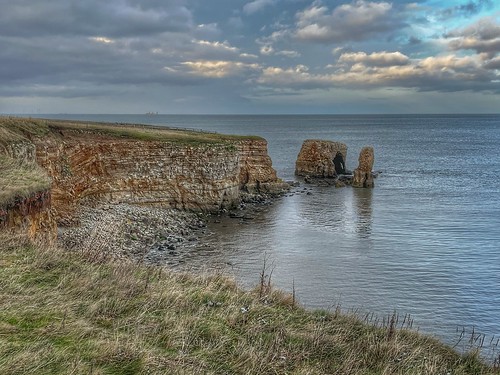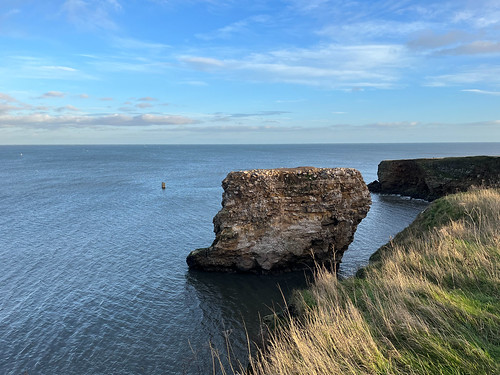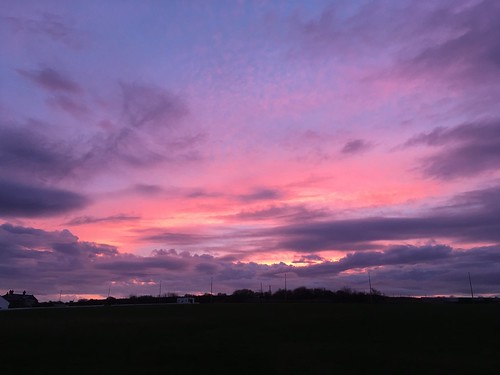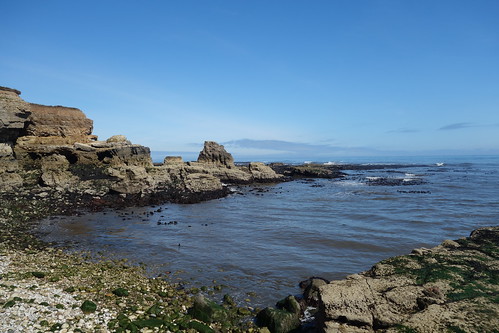Mention Sunderland and most people will probably picture a northern industrial town struggling (like most northern towns) to overcome the north-south divide and bias towards the south of England, or a middling Premier League football club with quite a nice stadium. They wouldn’t be wrong. But there’s more to Sunderland than that. Although it’s on the coast, most people are probably not aware that it’s quite a pleasant sea-side town as well with a beautiful sandy bay extending across the Roker and Seaburn districts, which are just north of the city centre.

The bay extends for a mile or so from the old port in the south at the Roker end to the start of the cliffs at the north of the Seaburn stretch of the bay. There’s a promenade extending along the full length of the beach which has a blue flag status. When the tide goes out there’s a large, flat sandy each. I reckon the sea must be pretty cold all year round – it is the North Sea after all – but it’s popular with surfers as well as children who want to splash in the water (and some adults too).
There are the usual typical features of the English seaside with a stretch of cafes, restaurants and fish and chip shops, and a small funfair. The buildings on the promenade at the southern Roker end are mainly hotels and guest houses while the north end of Seaburn is a little more up market, dominated by housing.
The painter L S Lowry, who hailed from Manchester, used to come up to Seaburn for holidays in the Seaburn hotel – now long gone and replaced by a block of flats – and there are a number of his paintings and drawings featuring the sea and promenade. Some examples can be seen here.

Pencil drawing by L S Lowry “A Promenade” (1960) Source here

We were up there earlier this week visiting family and, as we usually do when we travel up to Sunderland, we found some time to have a walk along the promenade and on the beach. It was a cold day with a grey sky, but it’s always nice to take in some sea air. The sea was fairly rough and there were a number of surfers riding the waves. We also saw three very hardy children dressed in their swimming costumes braving the cold water.

We’ve walked along the promenade and beach a few times during previous visits during the spring and summer where I’d taken a number of photos.

Roker beach during the summer

Looking out to sea from Seaburn promenade

Looking towards the promenade from the end of the pier on a summer evening.

Fishermen on the pier at sunset on a summer evening
After eating some fish and chips for our dinner (or lunch if you’re from the south) we drove a mile further north along the coast, past Whitburn up to Souter Lighthouse where we parked up and went for a walk along the cliffs. The land along the coast from Whitburn up to South Shields is now owned by the National Trust and has been preserved from development, creating a coastal park making it possible to walk all along the coast from the old port at Sunderland to South Shields.
At one time much of this land was industrial with Souter lighthouse sandwiched between the Marsden pit to the south and Marsden Village, built to house the miners, to the north. All of this is long gone. The pit was closed in the late sixties and it was demolished son after along with the village.

Today there’s a pleasant walk along the cliffs from which there are some stunning views of the rocky coastline and out to sea.
The sky was grey and dramatic and the sun kept breaking through the clouds lighting up the crests of the waves and creating some interesting effects.






























































